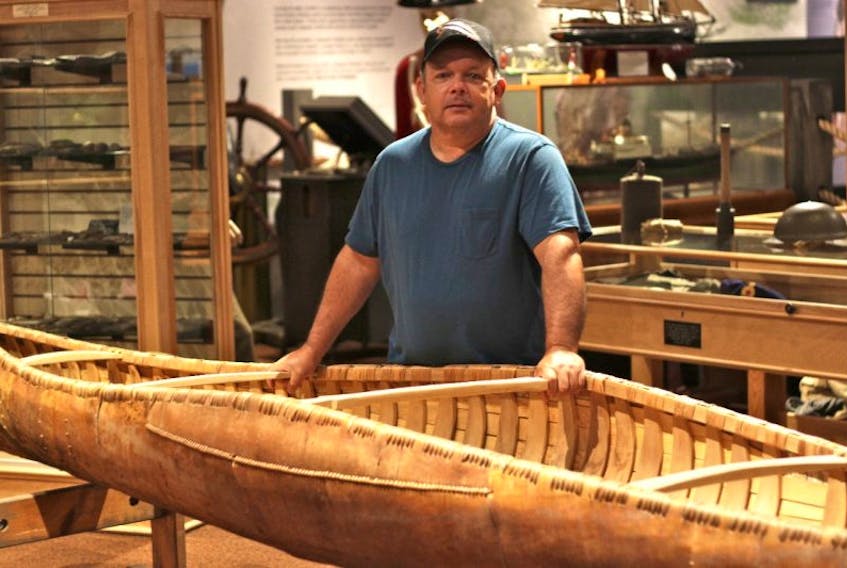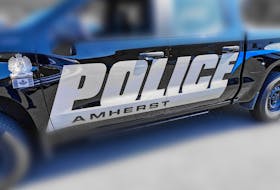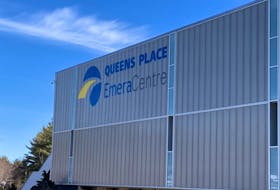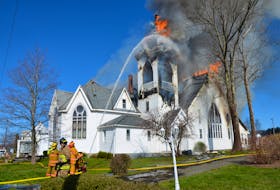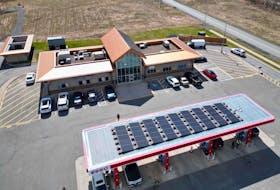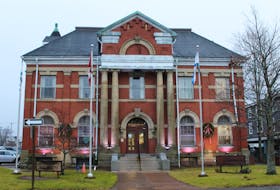When his father was a young boy, he helped build the last canoe Labrador’s great-grandfather ever made.
When his father was a young boy, he helped build the last canoe Labrador’s great-grandfather ever made.
“My father and I were planning on building a canoe, reviving the old tradition,” says Labrador. “So he showed me how to collect roots, collect and steam bark, that sort of thing. We attempted to build a canoe a few times, but we never had the time.”
Labrador’s interest in canoes goes back to his childhood. He started building model canoes in the 1980s, and eventually, those models got bigger and bigger.
In 2004, a year after Labrador’s father passed away, he made his first full-scale canoe. Since then, he’s sought out canoe makers from across Canada to learn more about the craft.
Labrador eventually decided to build full-size canoes. Some of his canoes are still scaled down, but they are still usable.
Traditional workmanship
The canoes are built in Mi’kmaq style, with mostly local wood materials. Labrador often uses cedar for the frame of the canoe, a material traditionally used by Mi’kmaq people in New Brunswick. Mi’kmaq native to Queens County would not have had access to those trees traditionally and used black spruce instead.
“Cedar is easier to work with, it bends easier,” he says.
Birch bark is used for the outside of the canoe. The inside of the bark faces the water, which Labrador says is something the movies get wrong in their portrayal of First Nations’ canoes.
“Birch bark is rare, it’s not just any tree, it’s a special tree and it’s thick bark,” he says. “There’s a lot of different things you have to look for. Out of 200 trees I check, I might find one that has birch bark suitable, and it might only be pieces.”
Labrador gathers the bark himself, which he says can take a while.
Sharing his skills
Labrador has built canoes for the public before and was recently in residence at Kejimkujik National Park. He kept track of his progress on social media and guests to the park were welcome to watch him work. That canoe is now on display at the information centre of the park.
Labrador is now moving to the west coast but plans to return to Nova Scotia for long visits, where he hopes to make more canoes the public can see. His wife is originally from British Columbia and they are moving there to be near family.
Labrador is leaving a bit of his legacy behind with a canoe he’s loaned the Queens County Museum. He says he wants the public to enjoy the canoe while he is away.
Five facts
1. The canoe is a smaller scale version of a sea-faring canoe. It’s 16 feet, 8 inches long; sea-faring canoes are traditionally between 20 and 30 feet long.
2. Labrador spent several weeks building the canoe in 2010 at Maritime Museum of the Atlantic in Halifax. Visitors could watch him work and speak to him; he says it was a great experience, but it went slower than expected because he ended up speaking to so many visitors.
3. It usually takes him approximately three months to complete a canoe.
4. The canoe is on display at the Queens County Museum along with samples of the various materials that went into making it.
5. While he’s on the West Coast, Labrador hopes to demonstrate the Mi’kmaq way of creating canoes. He’s also eager to learn about dugout canoes, made from hollowed tree trunks, which were the main type of canoe used by First Nations groups on the west coast.


